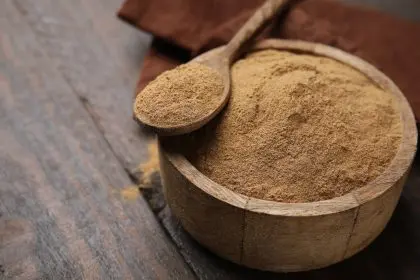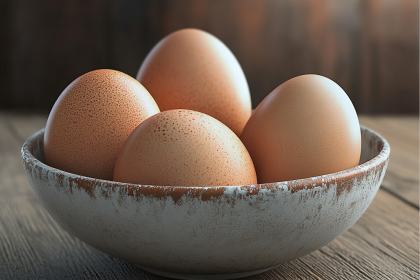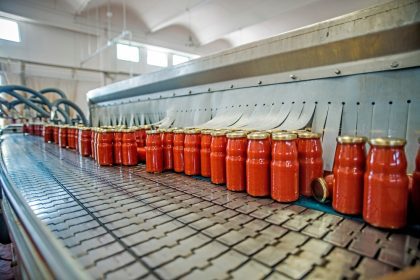The surge in food prices, projected by the USDA to increase 3.5% this year, has prompted many households to explore home gardening as a practical economic strategy. Cultivating food at home provides not only financial relief but also ensures access to fresh, pesticide-free produce while offering recreational benefits. For those considering this sustainable approach to addressing rising living costs, certain plants stand out for their ease of cultivation and productive yields.
Strategic gardening for economic impact
Home food cultivation represents more than a passing trend in the current economic climate. As grocery expenses continue climbing, growing even a portion of one’s produce can generate meaningful savings while providing nutritional advantages. For many households, establishing a home garden creates a practical buffer against inflation while fostering greater food independence.
The practice allows individuals to exercise greater control over their food supply, avoiding pesticides and chemical treatments common in commercial agriculture. Additionally, home-grown produce typically offers superior flavor and nutritional value compared to store-bought alternatives that may have traveled thousands of miles before reaching consumers.
Beyond economic considerations, many practitioners find gardening provides valuable physical activity and stress relief, making it a holistic solution to several contemporary challenges. The satisfaction of harvesting food from one’s own efforts creates a rewarding cycle that reinforces continued participation.
Vegetables with exceptional return on investment
Cherry tomatoes represent an ideal entry point for novice gardeners due to their forgiving nature and abundant production. These vibrant fruits thrive in containers or garden beds, requiring primarily consistent sunlight and moderate watering. Their rapid growth cycle delivers quick satisfaction, with plants often producing hundreds of sweet, flavorful tomatoes throughout a single growing season.
Onions offer exceptional utility and storage potential, making them particularly valuable for budget-conscious households. These kitchen staples can be planted in either spring or fall depending on regional climate considerations. Their exceptional shelf life post-harvest extends their economic benefit well beyond the growing season, providing flavor enhancement for countless meals from a single planting.
Green beans deliver impressive yields from minimal garden space, particularly pole varieties that grow vertically. These legumes fix nitrogen in soil, improving garden health while producing nutritious pods that can be enjoyed fresh or preserved. Their simple growing requirements and quick maturation make them particularly suitable for gardeners seeking rapid results.
Zucchini epitomizes productive gardening with its famously abundant harvests. A single plant in favorable conditions can produce enough vegetables to supply a household while generating surplus for sharing. This summer squash grows rapidly in warm weather, requiring minimal intervention beyond basic watering and sufficient space for its sprawling growth habit.
Cucumbers offer refreshing versatility for summer consumption, whether eaten fresh in salads or preserved through pickling. These vining plants benefit from vertical supports like trellises, allowing significant production from limited ground space. Their prolific nature during peak season often generates harvests exceeding immediate consumption needs, creating preservation opportunities.
Nutrient-dense greens and berries
Spinach provides exceptional nutritional density while requiring minimal garden space. This leafy green thrives in cooler temperatures, making it ideal for early spring and fall cultivation in most regions. Its quick growth from seed to harvest creates rapid resource returns, while its versatility in culinary applications ensures consistent utility.
Blueberries offer perennial production value through shrubs that yield harvests for decades with proper care. While requiring specific soil acidity levels and multiple plants for optimal pollination, established bushes produce valuable, antioxidant-rich fruits with minimal maintenance requirements. Their ornamental qualities provide additional landscape value beyond food production.
Radishes deliver almost immediate gardening gratification, often reaching harvestable size within 3-4 weeks of planting. These zesty root vegetables can be grown in small spaces and between slower-maturing plants, maximizing garden efficiency. Their quick development cycle allows multiple successive plantings throughout growing seasons.
Essential herbs for culinary enhancement
Rosemary provides exceptional value through its combination of culinary utility and resilient growth habits. This aromatic perennial herb, once established, demonstrates remarkable drought tolerance and year-round production in moderate climates. Its woody growth habit creates an attractive, low-maintenance addition to gardens while supplying aromatic seasoning for countless dishes.
Basil represents one of the most versatile and aromatic herbs for home cultivation. This fragrant annual grows readily in containers or garden beds, responding well to regular harvesting that stimulates continued leaf production. Its distinctive flavor profile enhances numerous culinary traditions while providing significant savings compared to purchasing fresh herbs commercially.
Both herbs thrive with minimal care once established, requiring primarily adequate sunlight and moderate watering. Their concentrated flavors mean even small harvests significantly impact culinary outcomes, creating substantial value from limited garden space.
Practical considerations for beginning gardeners
For those new to food cultivation, starting with containerized plants often provides the most accessible entry point. Containers allow precise control over soil quality and simplify maintenance while requiring minimal space commitment. Cherry tomatoes, herbs, and radishes particularly excel in container environments.
Soil quality fundamentally determines gardening success regardless of which plants are selected. Investing in quality garden soil or compost creates a foundation for productive growth that significantly impacts harvest volumes. Many municipalities offer free or low-cost compost to residents, providing economical soil enhancement.
Water management represents another critical consideration, particularly in regions experiencing drought conditions. Drip irrigation and mulching practices can dramatically reduce water requirements while improving plant health. Grouping plants with similar moisture needs creates more efficient watering zones.
Beyond the harvest
Home food cultivation extends beyond immediate consumption through preservation techniques that maximize economic benefits. Freezing surplus vegetables, drying herbs, and pickling cucumbers or green beans allows harvest value to extend throughout the year. These preservation practices compound the financial advantages of home gardening.
Community seed exchanges and plant swaps offer opportunities to expand garden diversity without additional expenditure. Many experienced gardeners willingly share plant divisions, cuttings, and saved seeds, creating mutually beneficial relationships that enhance growing success.
As food prices continue rising, home gardening provides a practical strategy for household economic resilience while delivering numerous secondary benefits. By focusing on these ten productive and accessible plants, even novice gardeners can establish successful food production systems that generate tangible returns on modest investments of time and resources.
















